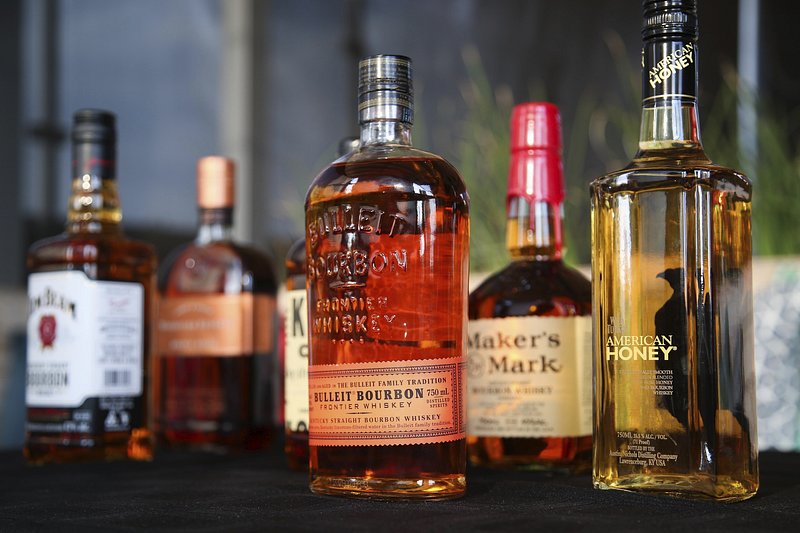
According to recent studies, the global consumption of whiskey has been on the rise in recent years. As a result, it is natural to wonder which country consumes the most whiskey overall. While some might assume that the United States or Ireland would top the list, the truth is a bit more surprising.
Table of Contents
Global Whiskey Consumption Overview
Whiskey is one of the most popular alcoholic beverages in the world. The global whiskey market has been growing steadily over the years, with a projected revenue of $7.7 billion by 2026.
According to Our World in Data, global consumption of spirits, including whiskey, has been increasing since the 1960s. In 2016, the average global alcohol consumption per person was 6.4 liters, with spirits accounting for around 42% of total alcohol consumption.
The United States is the largest whiskey consumer in the world, with Americans drinking an estimated 20 million cases of whiskey each year, as reported by Flight Wine Bar. India is the second-largest consumer of whiskey, with an estimated 1.5 billion liters consumed annually, as reported by Statista.
Top Whiskey-Consuming Countries
Country Rankings by Volume
Whiskey is one of the most popular alcoholic beverages in the world, and there are many countries where it is consumed in large quantities. The United States is the top whiskey-consuming country.
The United States is known for producing and consuming a wide variety of whiskey, including bourbon, rye, and Tennessee whiskey. France, on the other hand, is known for its high-end whiskey brands, such as Chivas Regal and Johnnie Walker. India has a long history of producing and consuming whiskey, and it is home to some of the world’s largest whiskey distilleries. Japan has gained a reputation for producing high-quality whiskey, and its brands have won numerous awards in international competitions. Australia is also known for producing a variety of whiskey, including single malt and blended varieties.
Per Capita Consumption
While the United States consumes the most whiskey by volume, it is not the top whiskey-consuming country per capita. That honor goes to France.
France’s high per capita consumption of whiskey can be attributed to its long history of producing and consuming high-end whiskey brands. Uruguay’s love for whiskey can be traced back to its European roots, and the country has a thriving whiskey culture. The United States’ high per capita consumption can be attributed to its large population and the popularity of whiskey in American culture. Spain and the United Arab Emirates are also known for their love of whiskey and have a thriving whiskey culture.
 photo credit: www.rawpixel.com
photo credit: www.rawpixel.com
Factors Influencing Whiskey Consumption
Whiskey is enjoyed by people all over the world, but some countries consume more of it than others. The factors that influence whiskey consumption are complex and varied and include cultural, economic, and legal and regulatory factors.
Cultural Factors
Cultural factors play a significant role in whiskey consumption. In some countries, whiskey is deeply ingrained in the culture and is a symbol of national identity. For example, in Ireland, whiskey has been produced for centuries and is an important part of the country’s history and culture. Similarly, in Scotland, whiskey is a symbol of national pride and is celebrated as a cultural icon.
Economic Factors
Economic factors also play a role in whiskey consumption. The price of whiskey can vary widely depending on the country and the brand. In some countries, whiskey is relatively inexpensive and widely available, making it a popular choice among consumers. In other countries, whiskey is considered a luxury item and is only affordable to a small portion of the population.
Legal and Regulatory Environment
The legal and regulatory environment can also influence whiskey consumption. In some countries, there are strict regulations governing the production, distribution, and sale of alcohol. These regulations can limit the availability of whiskey and make it more difficult for consumers to access it. In other countries, there are few regulations governing the sale of alcohol, making it easy for consumers to purchase and consume whiskey.
Trends in Whiskey Preferences
Flavor Profiles
Whiskey drinkers around the world have unique preferences when it comes to the flavor profile of their favorite spirit. Some prefer a smoky and peaty taste, while others enjoy a sweeter and fruitier flavor. For instance, in the United States, bourbon is the most popular whiskey variety, which is known for its sweet and smooth taste. On the other hand, in Scotland, the home of Scotch whiskey, peat-smoked malted barley is used to give the spirit a smoky and earthy flavor.
In recent years, there has been a growing trend towards flavored whiskey, particularly in the United States. Flavored whiskey is made by infusing the spirit with different flavors, such as honey, cinnamon, and apple. This trend has been driven by younger drinkers who are looking for a sweeter and more approachable whiskey.
Age and Maturation
Another trend in whiskey preferences is the age and maturation of the spirit. In general, the older the whiskey, the more expensive it is. This is because whiskey that has been aged for a longer period of time has had more time to develop complex flavors and aromas. In Scotland, for instance, single malt Scotch whiskey must be aged for a minimum of three years, while some varieties are aged for up to 25 years or more.
However, younger whiskey is also gaining popularity, particularly among younger drinkers who are looking for a less expensive and more approachable spirit. In the United States, for example, there has been a growing trend towards younger bourbon, with some distillers releasing whiskey that has been aged for as little as six months. These younger whiskeys tend to have a lighter and more approachable taste, making them popular among newer whiskey drinkers.
Impact of Whiskey Consumption
Economic Impact
Whiskey consumption has a significant impact on the economies of the countries where it is consumed. According to Statista, the global whiskey market revenue is expected to be led by India, followed by the United States, Japan, France, and the United Kingdom. These countries are also among the top whiskey-consuming nations in the world. The whiskey industry generates significant revenue for these countries, providing employment opportunities and contributing to their Gross Domestic Product (GDP).
Social and Health Considerations
While whiskey consumption has economic benefits, it also has social and health considerations. Excessive consumption of whiskey can lead to negative social outcomes such as increased violence, crime, and accidents. Additionally, heavy drinking can lead to serious health problems such as liver disease, cancer, and mental health issues.
According to Our World in Data, globally, alcohol consumption causes 2.8 million premature deaths per year. Excessive whiskey consumption can also lead to alcohol dependence, which can have serious social and health implications.
It is important for individuals to consume whiskey responsibly and in moderation. Governments and organizations should also implement policies and programs to promote responsible drinking and reduce the negative consequences of excessive whiskey consumption.
Frequently Asked Questions
Which nation leads in per capita whiskey consumption?
According to the search results, India leads in per capita whiskey consumption, with each inhabitant drinking 2.1 liters per year. This is followed by France with 1.7 liters per year and Uruguay with 1.6 liters per year.
What are the top whiskey-consuming countries globally?
The top whiskey-consuming countries globally are India, the United States, France, Japan, and the United Kingdom. India has the highest consumption rate, with each inhabitant drinking 2.1 liters per year. The United States ranks second with an annual consumption rate of 0.96 liters per capita.
Which country is recognized as the largest market for whiskey sales?
The United States is recognized as the largest market for whiskey sales, followed by France, the United Kingdom, and Germany.
How does bourbon consumption compare among different countries?
Bourbon is primarily consumed in the United States, where it is recognized as a native spirit. However, bourbon has also gained popularity in other countries, such as the United Kingdom, Japan, and Australia.
In terms of demographics, who are the primary whiskey consumers?
Whiskey consumption is popular among a wide range of demographics, including men and women of different ages and income levels. However, the search results suggest that whiskey consumption is more popular among older adults, with individuals over the age of 50 being the primary consumers.
Conclusion
Based on the research conducted, it is clear that whiskey is a popular alcoholic beverage enjoyed by many people around the world. The United States is the largest consumer of whiskey, followed by France, India, and Japan. Other countries, such as Canada, Ireland, and the United Kingdom, also have a significant whiskey consumption rate.
Whiskey consumption is a significant part of many cultures and traditions, and it continues to be a popular choice among alcohol consumers. Whether enjoyed neat, on the rocks, or in a cocktail, whiskey remains a timeless classic that is enjoyed by many.
Related Posts
If you’re interested in learning more about whiskey, here are a few related posts that you may find useful:
- Whisky Tourism Could Be Better, Smarter, Stronger: This post by The Whisky Lady discusses the state of whisky tourism and how it can be improved to better serve visitors.
- Where to quench your whisky thirst in Porto: If you’re planning a trip to Porto and want to know where to find a good dram, this post is for you. The Whisky Lady shares her recommendations for the best whisky bars in the city.
- So Single Malts are actually Blends?: This post is a back-to-basics lesson on what constitutes a single malt whisky and how it differs from a blend.
- How To Enjoy Whisky Without Breaking The Bank: If you’re on a budget but still want to enjoy good whisky, this post by The Whisky Lady offers some tips and tricks for doing so.
- Halt to the whisky police: This post is a rant against whisky snobbery and the idea that there is a right or wrong way to enjoy whisky.



